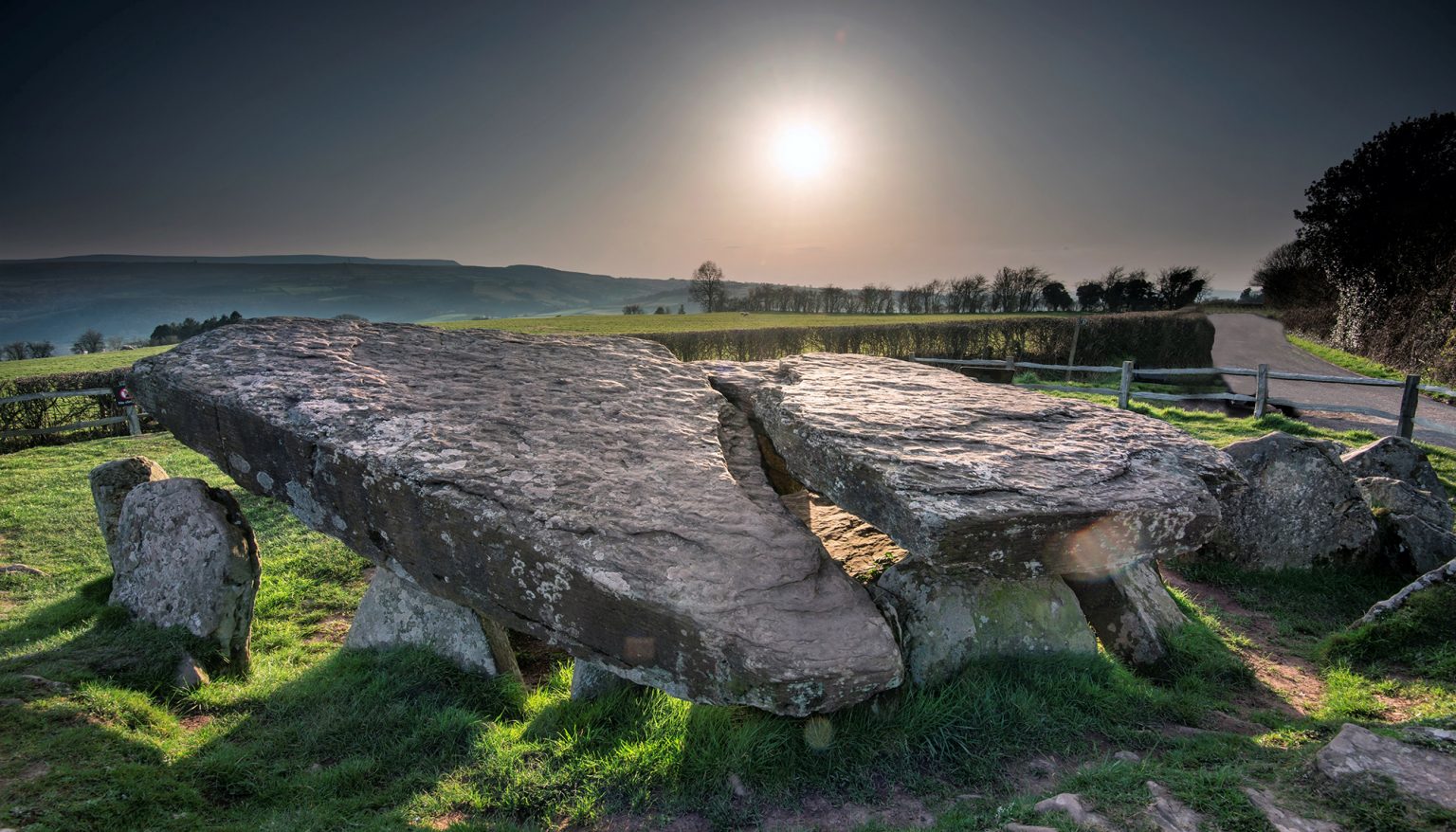This 5,000-Year-Old Neolithic Tomb Located In England Is Said To Be Linked To King Arthur

One of the most recognizable Neolithic monuments in England is Arthur’s Stone. The chambered tomb, or dolmen, is located on a hilltop in Herefordshire, England.
It was made in 3700 B.C., and as early as the 13th century, people have linked it to the mythical King Arthur, the ruler of the kingdom of Camelot. Today, only the inner chamber of the tomb has survived.
The table-shaped tomb consists of nine large stones standing upright. They are topped by one massive stone that weighs around 28 tons, according to English Heritage, a charity that manages hundreds of historic sites in England.
Legend has it that King Arthur fought against a giant at the site. As the giant fell to its death, its elbows left behind imprints on the side of one of the stones.
Another tale claims that the marks were made when Arthur knelt down to pray. It is believed the site is also the king’s burial place.
A previous dig conducted outside of the monument revealed that Arthur’s Stone stretched into a field to the south and went through two phases of construction.
More recent studies have shown that the 5,000-year-old tomb may have been part of a complex that led into the Halls of the Dead.
People likely gathered at the complex for meetings and feasts. According to the University of Manchester, the Halls of the Dead were large wooden buildings that were burned to the ground on purpose.
Afterward, they were replaced with three earthen burial mounds. It is possible that Arthur’s Stone and the Halls of the Dead once served as locations for ancient rituals.
Neil – stock.adobe.com – illustrative purposes only
Sign up for Chip Chick’s newsletter and get stories like this delivered to your inbox.
The existence of Arthur from the legend has been debated for years. Historical records tell of a man named Arthur who led resistance against the Saxons and Jutes sometime during the fifth or sixth centuries C.E. Some Welsh documents mentioned a similar warlord.
However, the king from the myth we know today emerged several centuries later. Throughout the 12th and 13th centuries, Arthurian legends were spread via written word among the wealthy and orally for the general population.
Earlier stories of Arthur described his strength in battle and his ability to build nations, but eventually, the tales became part of the medieval romance tradition and emphasized the noble concepts of chivalry, morality and righteousness.
Ever since the 13th century, Arthur’s Stone’s fame has remained undiminished. During the 17th-century English Civil Wars, Charles I camped in the area with his troops.
Additionally, the writer C.S. Lewis based the Stone Tablet in The Lion, the Witch and the Wardrobe on Arthur’s Stone.
“Arthur’s Stone is one of this country’s outstanding prehistoric monuments, set in a breathtaking location—yet it remains poorly understood,” said Julian Thomas, an archaeologist at the University of Manchester.
Welcome to Billionaire Club Co LLC, your gateway to a brand-new social media experience! Sign up today and dive into over 10,000 fresh daily articles and videos curated just for your enjoyment. Enjoy the ad free experience, unlimited content interactions, and get that coveted blue check verification—all for just $1 a month!
Account Frozen
Your account is frozen. You can still view content but cannot interact with it.
Please go to your settings to update your account status.
Open Profile Settings